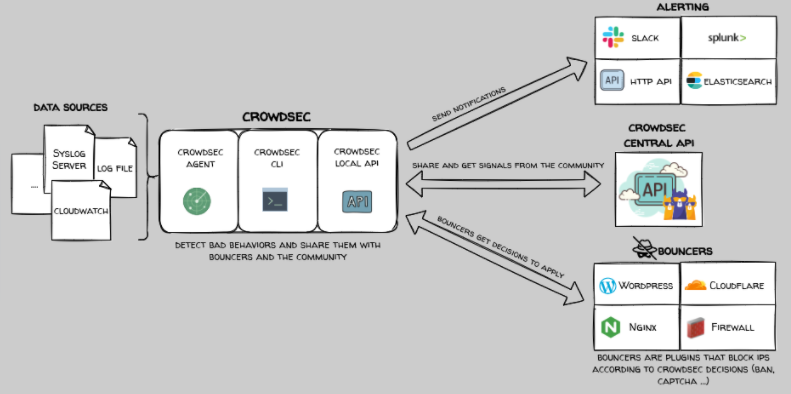Hacked because you didn't listen ?
-
I’ve been a veteran of the infosec industry for several years, and during that time, I’ve been exposed to a wide range of technology and situations alike. Over this period, I’ve amassed a wealth of experience around information security, physical security, and systems. 18 years of that experience has been gained within the financial sector - the remaining spread across manufacturing, retail, and several other areas. I’ve always classed myself as a jack of all trades, and a master of none. The real reason for this is that I wanted to gain as much exposure to the world of technology without effectively “shoehorning” myself - pigeon holing my career and restricting my overall scope.
I learned how to both hack and protect 8086 / Z80 systems back in 1984, and was using “POKE” well before Facebook coined the phrase and made it trendy (one of the actual commands I still remember to this day that rendered the CTRL, SHIFT, ESC break sequence useless was
POKE &bdee, &c9I spent my youth dissecting systems and software alike, understanding how they worked, and more importantly, how easily they could be bypassed or modified.
Was I a hacker in my youth ? If you understand the true meaning of the word, then yes - I most definitely was.
If you think a hacker is a criminal, then absolutely not. I took my various skills I obtained over the years, honed them, and made them into a walking information source - a living, breathing technology encyclopedia that could be queried simply by asking a question (but not vulnerable to SQL injection).
Over the years, I took an interest in all forms of technology, and was deeply immersed in the “virus era” of the 2000’s. I already understood how viruses worked (after dissecting hundreds of them in a home lab), and the level of damage that could be inflicted by one paved the way for a natural progression to early and somewhat infantile malware. In its earliest form, this malware was easily spotted and removed. Today’s campaigns see code that will self delete itself post successful execution, leaving little to no trace of its activity on a system. Once the APT (Advanced Persistent Threat) acronym became mainstream, the world and its brother realised they had a significant problem in their hands, and needed to respond accordingly. I’d realised early on that one of the best defences against the ever advancing malware was containment. If you “stem the flow”, you reduce the overall impact - essentially, restricting the malicious activity to a small subset rather than your entire estate.
I began collaborating with various stakeholders in the organisations I worked for over the years, carefully explaining how modern threats worked, the level of damage they could inflict initially from an information and financial perspective, extending to reputation damage and a variety of others as campaigns increased in their complexity). I recall one incident during a tenure within the manufacturing industry where I provided a proof of concept. At the time, I was working as a pro bono consultant for a small company, and I don’t think they took me too seriously.
Using an existing and shockingly vulnerable Windows 2003 server (it was still using the original settings in terms of configuration - they had no patching regime, meaning all systems were effectively vanilla) I exhibited how simple it would be to gain access first to this server, then steal the hash - effortlessly using that token to gain full access to other systems without even knowing the password (pass the hash). A very primitive exercise by today’s standards, but effective nonetheless. I explained every step of what I was doing along the way, and then explained how to mitigate this simple exploit - I even provided a step by step guide on how to reproduce the vulnerability, how to remediate it, and even provided my recommendations for the necessary steps to enhance security across their estate. Their response was, frankly, shocking. Not only did they attempt to refute my findings, but at the same time, dismissed it as trivial - effectively brushing it under the carpet so to speak. This wasn’t a high profile entity, but the firm in question was AIM listed, and by definition, were duty bound - they had a responsibility to shareholders and stakeholders to resolve this issue. Instead, they remained silent.
Being Pro Bono meant that my role was an advisory one, and I wasn’t charging for my work. The firm had asked me to perform a security posture review, yet somehow, didn’t like the result when it was presented to them. I informed them that they were more than welcome to obtain another opinion, and should process my findings as they saw fit. I later found out through a mutual contact that my findings had been dismissed as "“unrealistic”, and another consultant had certified their infrastructure as “safe”. I almost choked on my coffee, but wrote this off as a bad experience. 2 months later, I got a call from the same mutual contact telling me that my findings were indeed correct. He had been contacted by the same firm asking him to provide consultancy for what on the face of it, looked like a compromised network.
Then came the next line which I’ll never forget.
“I don’t suppose you’d be interested in……”
I politely refused, saying I was busy on another project. I actually wasn’t, but refused out of principle. And so, without further ado, here’s my synopsis
“…if you choose not to listen to the advice a security expert gives you, then you are leaving yourself and your organisation unnecessarily vulnerable. Ignorance is not bliss when it comes to security…”
Think about what you’ve read for a moment, and be honest with me - say so if you think this statement is harsh given the previous content.
The point I am trying to make here is that despite sustained effort, valiant attempts to raise awareness, and constantly telling people they have gaping holes in systems for them to ignore the advice (and the fix I’ve handed to them on a plate) is extremely frustrating. Those in the InfoSec community are duty bound to responsibly disclose, inform, educate, raise awareness, and help protect, but that doesn’t extend to wiping people’s noses and telling them it wasn’t their fault that they failed to follow simple advice that probably could have prevented their inevitable breach. My response here is that if you bury your head in the sand, you won’t see the guy running up behind you intent on kicking you up the ass.
Security situations can easily be avoided if people are prepared to actually listen and heed advice. I’m willing to help anyone, but they in return have to be equally willing to listen, understand, and react.
Hello! It looks like you're interested in this conversation, but you don't have an account yet.
Getting fed up of having to scroll through the same posts each visit? When you register for an account, you'll always come back to exactly where you were before, and choose to be notified of new replies (ether email, or push notification). You'll also be able to save bookmarks, use reactions, and upvote to show your appreciation to other community members.
With your input, this post could be even better 💗
RegisterLog in



